|
Lake and Pond Restoration - Chemical Free Phosphorus Filtration System |
|
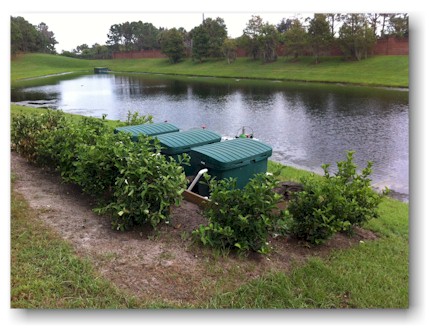 |
Ultra-PhosFilterTM
nutrient filtration system assists in pond and stream protection, lake,
stream and watershed restoration projects. The system captures
phosphorus with a design based on an innovative "side-stream" filtration
system that utilizes a proprietary phosphorus removal filtration media.
The Ultra-PhosFilter system utilizes a
chemical free phosphorus removal design. The PhosFilter system
is both cost-effective and compact, capturing phosphorus and other
pollutants as well.
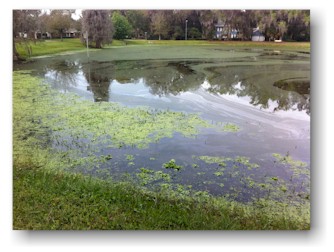
|
|
|
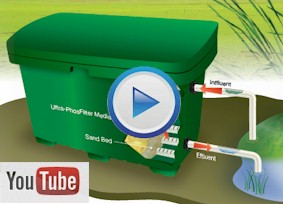
Ultra-PhosFilter Video
(2 minutes)
This innovative phosphorus filtration technology captures phosphorus and
other water column pollutants. The system includes a compact filter
chamber/chambers that are installed at the edge of a pond, lake or
stream.
The system acts like a large aquarium filter. The water
from the lake is pumped into the filtration chambers that contain
removable filters. Clean, filtered water is returned to the lake after
flowing through the filtration media.
|
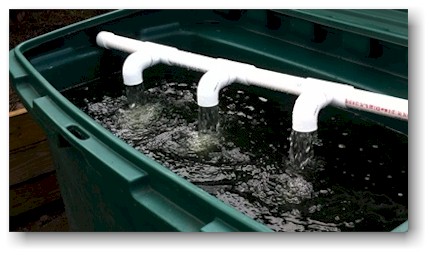 |
|

Ultra-PhosFilterTM
utilizes a patented filtration media composed of natural,
environmentally friendly elements. The active filter media can be
engineered to target and remove specific pollutants that may be unique
to the chemical composition of the remediation stream, lake or pond. The
filtration system assists in meeting the new TMDL Numeric Nutrient
Criteria standards. The
system design focuses on capturing phosphorus upstream at its source
before becoming diluted downstream.
|
Field Test - Stormwater Pond Within RCID - Nutrient
Removal |
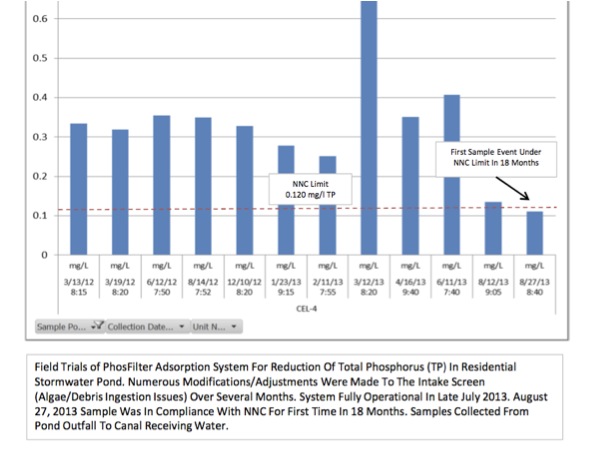
Ultra-PhosFilterTM filtration system removes the algae bloom producing nutrient
phosphorus as well as other organic matter suspended in the
water column. Herbicides and other chemicals that kill plant life in the
lake to "control" algae have numerous negative effects on the health of
the stormwater pond.
This technology was proven effective in a SFWMD
project upstream from Lake Okeechobee where approximately 90% of TP
was removed, from up to 5.0 mg/l to 0.5 mg/l or less.
A
subsequent recent installation in a stormwater pond within Reedy
Creek Improvement District RCIM showed a reduction
of nearly 99% TP meeting the Numeric Nutrient Criteria (NNC)
discharge criteria of 0.120 mg/l.
|
|
________________________________________________________________ |
|
River and Stormwater Pond Algae Blooms |
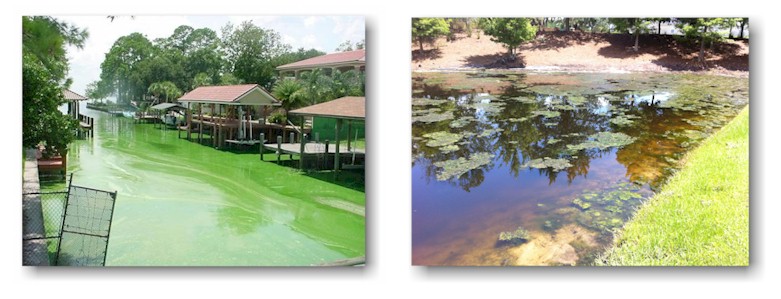
Chemically "treated" dying algae and plants immediately
release the phosphorus and nitrogen into the water creating a spike in
their concentration levels in the lake.
Photo: St Johns
River "Green Monster" recurring algae bloom
|
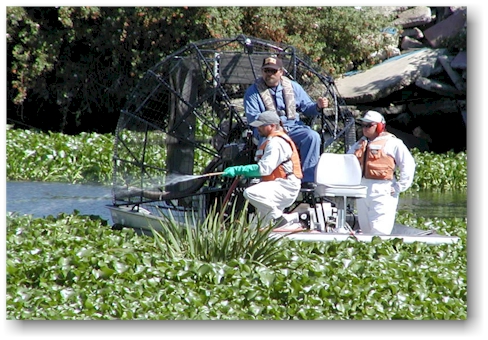 Chemical
treatment kills native plants and thereby promotes algae blooms as there
are no other surviving plants to remove the nutrients from the pond. Chemical
treatment kills native plants and thereby promotes algae blooms as there
are no other surviving plants to remove the nutrients from the pond.
Dead algae and plants sink to the lake bottom and create deep layers
of legacy muck. |
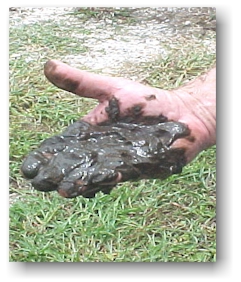
Heavy rain and wind stirs up this muck, releasing nutrients back
into the water column.
The nutrients and suspended organic matter released from the muck
flushes downstream
to pollute the receiving waterbody. |
|
|
____________________________________________________________________ |
|
Stormwater Pond Pollutant Removal - Vital to Watershed
Restoration |
|
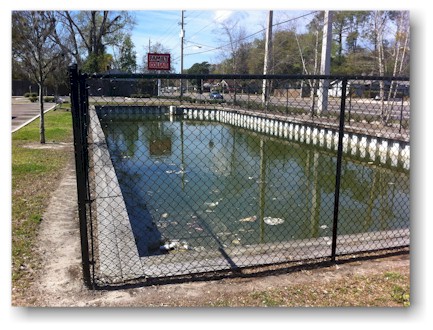
Stormwater ponds were initially designed to capture
runoff to prevent street flooding.
They became pollutant
"treatment" systems as stormwater regulations evolved.
|
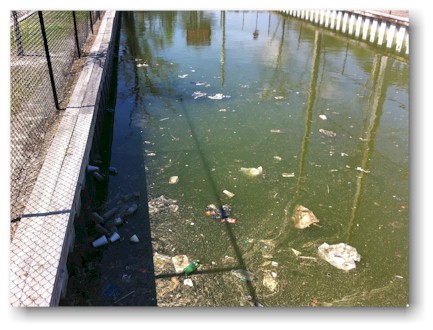
In
many cases these ponds are more like "open sewers" that capture and hold
a variety of pollutants.
|
|
|
Captured pollutants remain in the ponds until the next
significant rain or windy day where they are flushed out and washed
downstream.
|
|
 |
|
|
Pollutants residing in stormwater ponds often are not accounted for by
"grab sampling" methods. Water quality testing/sampling often occurs on
clear days when the sun is out and the weather is pleasant. Capturing
samples during this time will not account for the pollutants that are
flushed out during and after a heavy rain or wind event.
|
 |
|
_______________________________________________________________ |
|
|
South Florida Cattle Ranch - Platt Branch Restoration |
|
Ultra-PhosFilter is an engineered filtration media that has the
unique
ability to
filter and retain up to 1 1/2 times its weight in
phosphorous.
|
|
|
Additional Applications for PhosFilter include:
*
Package Plant WWTPs
* Catch Basins
* Animal Farms - CAFOs
* Ponds & Ditches
* Citrus Farms
* Sugar Farms
* Bioretention Systems
* Golf Courses
* Wetland Restoration
|
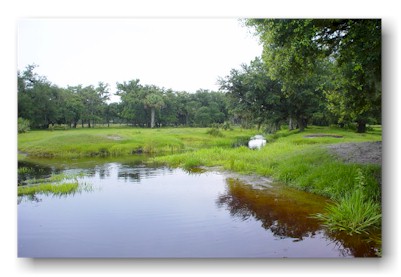
Platt Branch |
|
|
|
|
|
|
|
|
|
|
Testing by the South Florida Water Management District at
this
Florida cattle ranch showed a phosphorous removal rate that exceeded 90%. (More
testing information is available upon request) |
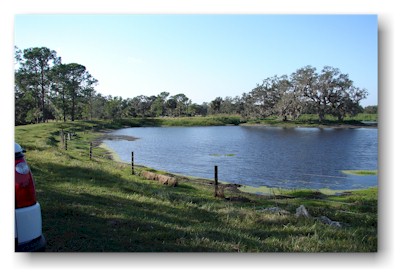
Reservoir Pond holds stormwater prior to treatment in
the PhosFilter Ponds. Water is gravity fed into the East and West
PhosFilter Ponds. |
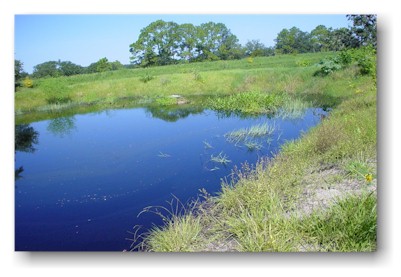
West PhosFilter Pond treats stormwater that gravity feeds from the Reservoir Pond.
|
|
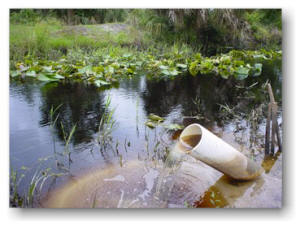
Discharge Pipe
Clean stormwater flows into Platt
Branch after passing through the PhosFilter media in the
PhosFilter Pond. Over 90% of the phosphorus has been removed. |

Sump Pump
Stormwater is pumped from the
Ranch swales/sump into the Reservoir Pond.
Water then is gravity fed into either the East or West
PhosFilter Pond.
|
|

PhosFilter Pond
Clean stormwater flows into Platt
Creek after passing through the PhosFilter media in the
PhosFilter Pond. Over 90% of the phosphorus has been removed. |
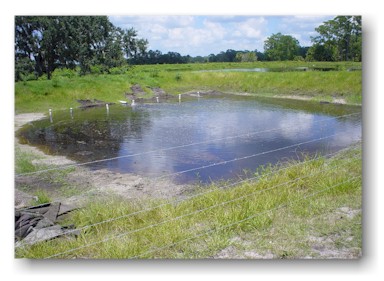 |
|
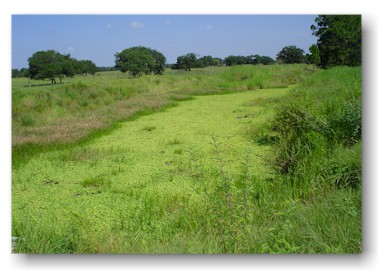
Ranch Stormwater
Swales & Sump
Stormwater is
pumped from the "Sump" into the
Reservoir Pond. |
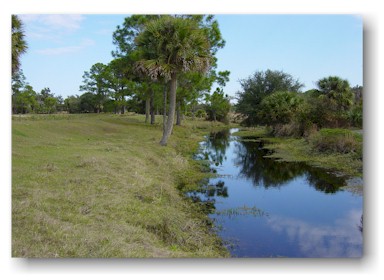
Platt Branch
Clean stormwater flows into Platt
Creek after passing through the PhosFilter media in the
PhosFilter Pond. Over 90% of the phosphorus has been removed. |
|
|
|
| |








 Chemical
treatment kills native plants and thereby promotes algae blooms as there
are no other surviving plants to remove the nutrients from the pond.
Chemical
treatment kills native plants and thereby promotes algae blooms as there
are no other surviving plants to remove the nutrients from the pond.












